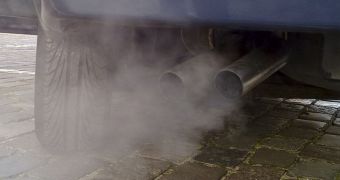A group of experts is currently working on investigating a method of using the vast amounts of carbon dioxide gas that are emitted around the world for creating alternative fuels. The research is centered on developing advanced, porous materials that could eventually be used to store the excess CO2 gas, which then could, in turn, be used in chemical processes that would underlie the production of new types of fuels. This impressive work is being conducted by investigators at the University of Bath, working together with colleagues from the University of Bristol, the BBC News reports.
More precisely, the goal of their investigation is to determine the feasible ways in which carbon can be sequestrated from the atmosphere, so as to be used for other applications. If they are successful in their quest, then they could eliminate the need for extracting additional fossil fuels (oil, coal, natural gas) from the ground. The existing fuel would be reconverted over and over again, and the demand for additional amounts of the stuff would decline significantly.
One of the main conditions their research must fulfill is that all the processes associated with it need to be powered up through renewable methods, preferably via solar energy. In addition to the Bath University team, which is leading the investigation, researchers from Bristol and the University of the West of England are also involved in the project. Funding for the initiative was secured from the Engineering & Physical Sciences Research Council (EPSRC), which provided the joint team with £1.4 million to conduct their work.
“Current processes rely on using separate technology to capture and use the CO2, which makes the process very inefficient. By combining the processes the efficiency can be improved and the energy required to drive the CO2 reduction is minimized. It will be a massive challenge but we have a strong team that includes chemists, chemical engineers, biologists and life cycle analysts,” says Bath senior chemistry lecturer Dr Frank Marken. The team believes that the future could see these porous materials being added to chimneys, so as to reduce the total amount of CO2 that escapes into the atmosphere.
“One of the great advantages of this project is that it will exploit the natural abilities of micro-organisms to reduce CO2 in the atmosphere and at the same time produce electricity or hydrogen as required,” says Bristol Robotics Laboratory (BRL) expert Dr Ioannis Ieropoulos. “Currently, there are no large-scale technologies available for capturing and processing CO2 from air,” adds UB researcher Dr David Fermin.

 14 DAY TRIAL //
14 DAY TRIAL //